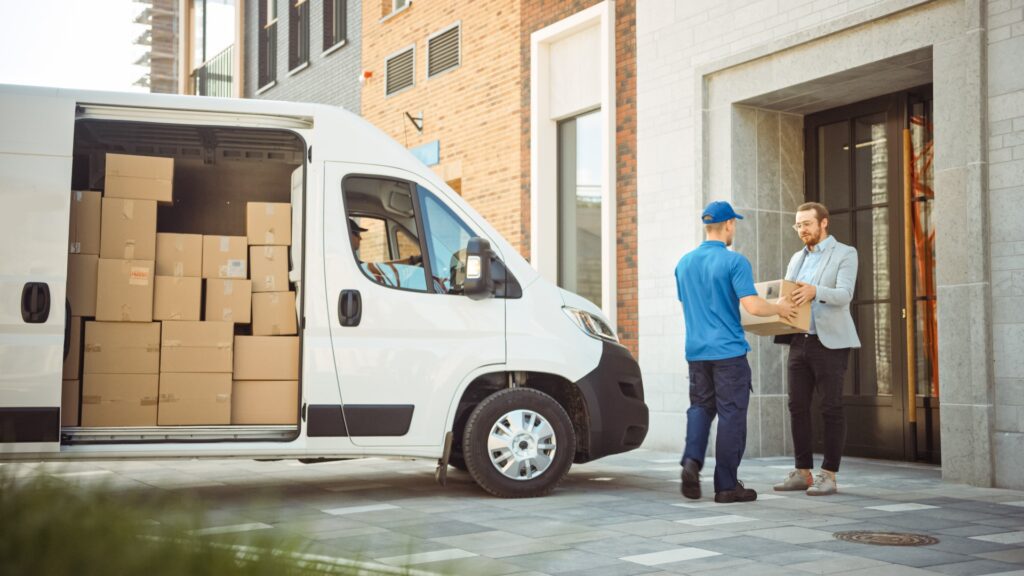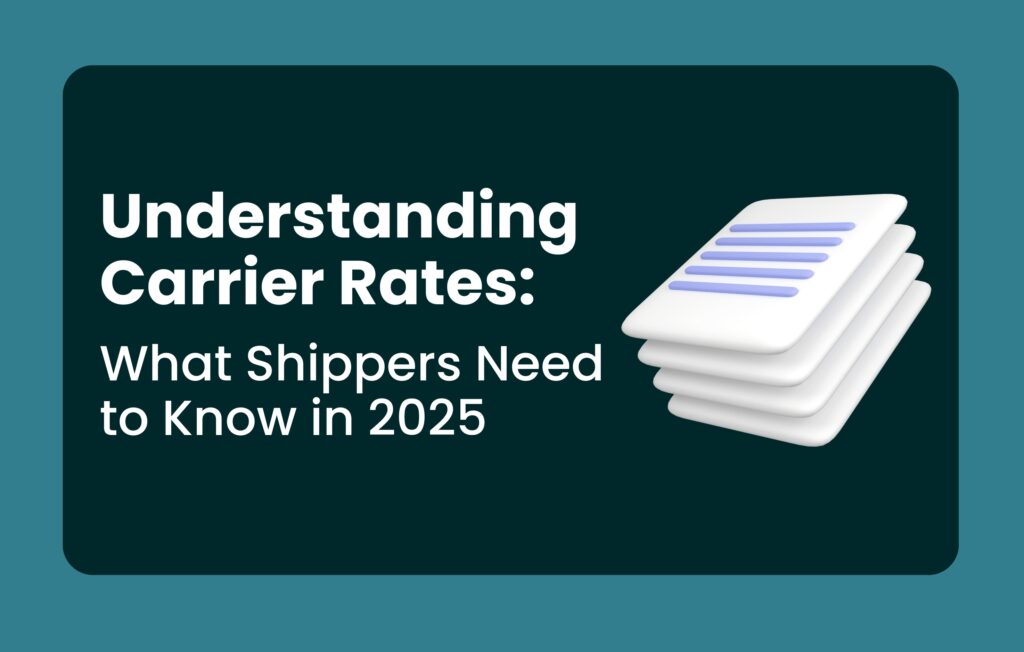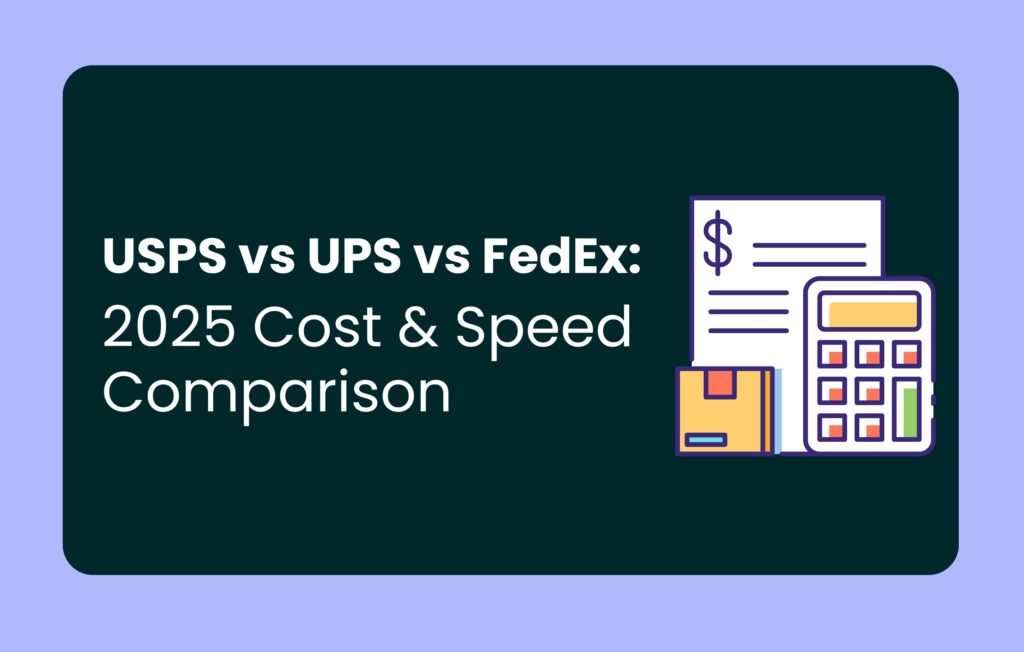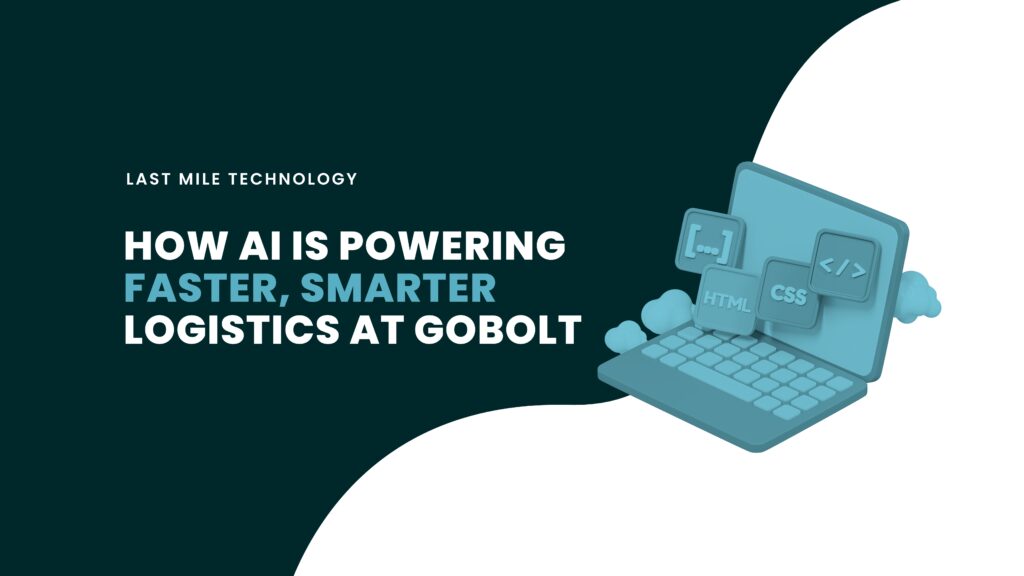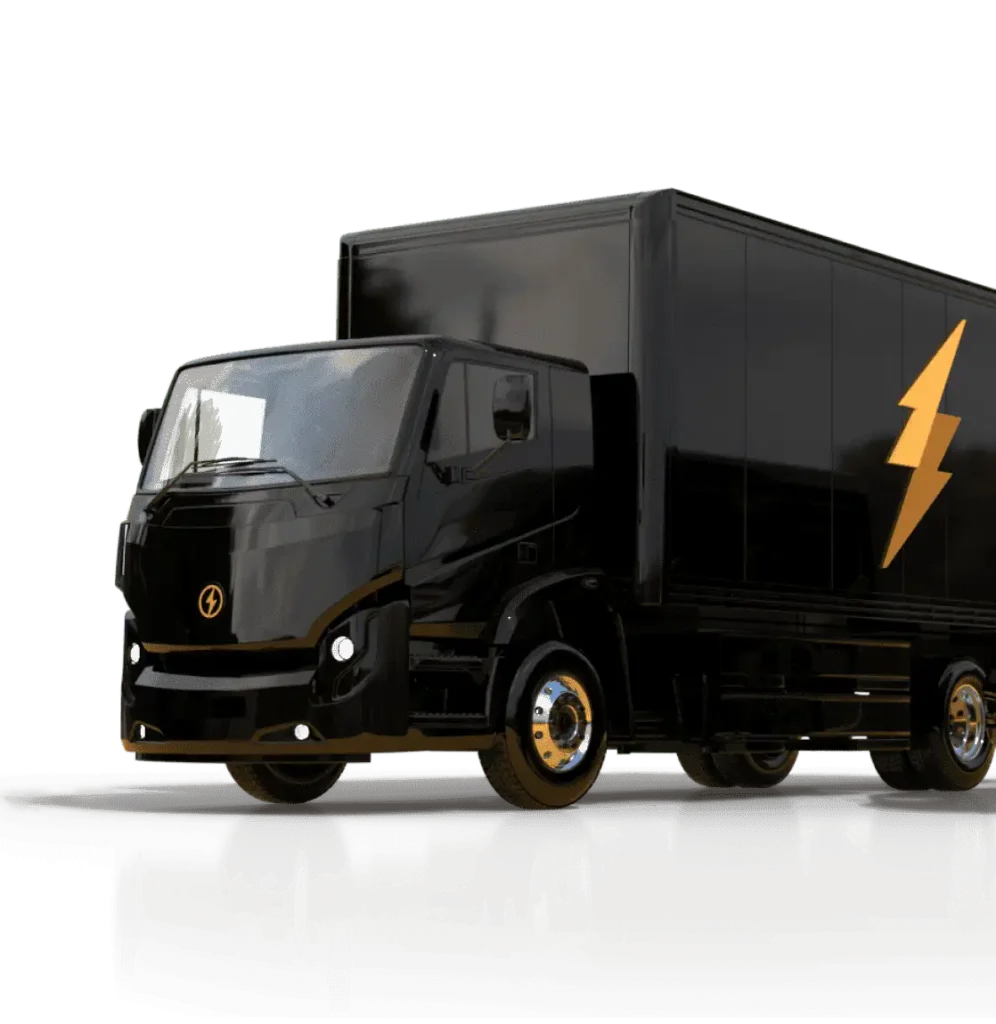Why Your Last Mile Feels Like a Never-Ending Road Trip
Imagine this: you’re on a road trip, cruising through smooth highways, making great time. But as soon as you hit that last stretch, you’re stuck on a bumpy, one-lane road, dodging potholes and questioning every decision that brought you here. Sound familiar? That’s what last mile delivery — and choosing the wrong last mile carrier — feels like for many logistics pros.
The first 99% of the shipping journey might be smooth, but when it comes to getting packages to your customer’s doorstep? That’s where delays, inefficiencies, wrong addresses, and costs tend to pile up. The result? Missed expectations, frustrated customers, and a few more grey hairs.
Article contents:
Let’s get started.
What Is A Last Mile Carrier?
A last mile carrier is a provider that specializes in the final leg of the order process, delivering orders to a shoppers’ doorstep. This includes the timely and efficient transportation of inventory from a fulfillment center or shipping hub to its final delivery destination.
Common examples of last mile carriers in Canada include FedEx, UPS, DHL, Canpar. And in the U.S., examples of last mile carriers include USPS, FedEx, UPS.
As a brand in 2025, you almost certainly know a little (or a lot) about last mile logistics. Still, some may be wondering: What is a last mile carrier? And why are last mile carriers important to my brand?
How Last Mile Delivery is Evolving in 2025 - and Beyond
To deliver standout customer experiences without breaking the bank, brands must keep pace with how last mile delivery is evolving. Here are some of the latest shifts with last mile carrier services, and how you can stay ahead of the curve:
1. Carrier Diversification: Minimizing Risk and Maximizing Flexibility
Relying on a single carrier is no longer viable in today’s unpredictable logistics environment. Brands are adopting a multi-carrier shipping strategy to reduce dependency and ensure consistent delivery performance. By working with multiple carriers, brands can minimize the risk of disruptions, improve service reliability, and offer greater delivery options to their customers.
2. Sustainability in the Last Mile
Shoppers are becoming increasingly eco-conscious, pushing brands to adopt greener delivery methods. Electric vehicles (EVs), carbon-neutral shipping options, and extended delivery windows (such as GoBolt’s ‘Eco’ delivery option) are emerging as essential components of sustainable logistics.
Did you know? In 2024, GoBolt delivered 1.5 million EV deliveries for our brand partners, setting a new company record for sustainable deliveries and achieving 562% YoY growth.
3. Hyper-Local Dispatch Models
Hyper-local dispatch hubs are small and strategically placed in dense delivery zones. These hubs reduce travel distances for delivery drivers, enabling faster delivery times, fewer failed attempts due to shift timing outs, and lower emissions. GoBolt utilizes dispatch hubs to meet rising shopper expectations for quick delivery and to reduce the carbon footprint of last mile carrier operations.
4. Data-Driven Delivery Optimization
With the rise of advanced analytics and automation tools, brands can work with their 3PLs to optimize delivery routes, forecast demand, and make data-driven decisions to reduce costs and improve efficiency.

5. Shopper Preference for Real-Time Tracking and Flexibility
Real-time tracking has become a must-have for today’s shoppers, enabling them to monitor their delivery status in real time. Additionally, flexible delivery options, such as allowing customers to choose their preferred time windows, are becoming a competitive differentiator.
Why are last mile carrier services important?
For brands, your last mile delivery logistics solutions can make or break the experience for shoppers. And if you’re outsourcing your final mile logistics, you’ll want to be sure you are working with a provider that will elevate the last mile for you and your shoppers.
Let’s walk a (last) mile in your shopper’s shoes for a second.
Imagine your shopper just bought a beautiful sectional sofa for their new apartment. But after a week, they still haven’t received an update on the delivery status. They feel left in the dark and have no idea when to expect the delivery. When they finally do get a delivery date, they are given an ambiguous delivery window, meaning they have to wait around all day for the delivery. And to make matters worse, upon arrival the sofa is damaged.
Unfortunately, a last mile delivery problem like this can leave a negative and lasting impression on your shoppers.
And for todays’ shoppers, expectations around delivery are sky high. In fact, after just one poor delivery experience, 84% of shoppers say they wouldn’t return to shop with that brand again.
But here’s the real kicker. As the brand, you likely had very little control over your shopper’s final delivery experience. It’s the last mile carrier who left the final brand impression. That’s why it’s essential to partner with a last mile carrier you can trust, and one who can help reduce last mile delivery problems. Your brand reputation depends on it.
Last mile delivery may be one of the most challenging aspects of supply chain management, but it demands your attention. Here are a couple more reasons why last mile carriers are key to your shipping strategy.
1. Meet shoppers’ expectations
Today’s shoppers have come to expect fast, free delivery. And shoppers have the power to compare infinite options to find the best experience before making a purchase. In a study on shipping and delivery expectations, 50% of consumers surveyed said they would avoid retailers that didn’t offer free shipping, while 77% said they have abandoned their cart due to unfavorable shipping options.
Slow or expensive shipping is enough to compel a shopper to abandon their purchase and opt for your competitor instead.
2. Create a positive delivery experience
Ninety-eight percent of shoppers say delivery is a key part of their brand loyalty. But 44% think brands are falling short of providing a positive final delivery experience. Poor last mile logistics are leaving them dissatisfied, disgruntled, and unlikely to become repeat customers. What’s more, 47% will not order again from a brand with poor delivery visibility.
The message here is clear. Brands need to create a seamless and pleasant last mile delivery experience for their shoppers. Clear communication between you, your last mile carrier, and your shoppers can make, or break, their experience. And part of this is providing your shoppers with transparent communication through last mile delivery tracking. This includes updates on their order’s shipping status, and timely updates on the status of their delivery.
How does last mile delivery work?
Before we get into exactly how final mile delivery works, let’s begin at the original source: the manufacturer. If your brand manufactures items in England, and ships the products overseas to a fullfillment center in New York, that is considered freight, or first mile. The last mile delivery service takes the product from the fulfillment center to it’s final destination. So in this case, the final mile delivery process would be from the fulfillment center in New York, to your shopper’s door.
What are the steps of last mile delivery?
Last mile delivery can be broken down into the following steps:
- Order Received/Pick & Pack:
Once the order is received by the warehouse or fulfillment center, it’s picked from the shelves and packed according to the brand’s SOPs. This step may include quality checks to ensure accuracy and preparation for shipping. - Carrier Selection:
Once the order is fulfilled and packed, it’s prepared for shipping. This includes selecting a carrier based on factors like delivery destination, speed, and cost, followed by printing and attaching the shipping label.
Carrier assignment considerations include the type of labor required. For example, white glove deliveries are assigned to carrier drivers trained in installation and, if needed, supported by additional delivery professionals. - Carrier Handoff:
If you are working with a 3PL (third-party logistics) partner that does both fulfillment and shipping, the order is moved to the shipping staging area after being picked, packed, and labeled. In the staging area, orders may be consolidated or sorted for efficient loading and carrier pickup. - Carrier Pickup:
If you’re working with an end-to-end 3PL partner that also provides their own carrier services, like GoBolt Parcel, carrier routes are planned during this stage. These routes are optimized using advanced tools that consider delivery addresses delivery zones to minimize travel time, reduce emissions, and ensure timely deliveries. Contingency plans are also in place to handle potential disruptions. - Order Scanned:
Before being loaded by the carrier, the order is scanned to initiate last mile delivery tracking. This step ensures traceability, reflects that the order has left the fulfillment center, and triggers real-time updates to keep shoppers informed about their delivery. - Order is Delivered:
The final stage of last mile delivery is when the order reaches it’s final destination. Depending on the type of delivery and the brand’s SOP, items can be left at the doorstep, delivered just inside the front door (threshold delivery), room of the shopper’s choice, or even installed in the home (white glove delivery).
For example, at GoBolt we have last mile service for Big & Bulky items (like furniture) which may be delivered and brought into the home or business, or our Parcel delivery service for smaller packages (like apparel) where the package might be delivered at the door. We’ll provide more context on these different levels of delivery service below.
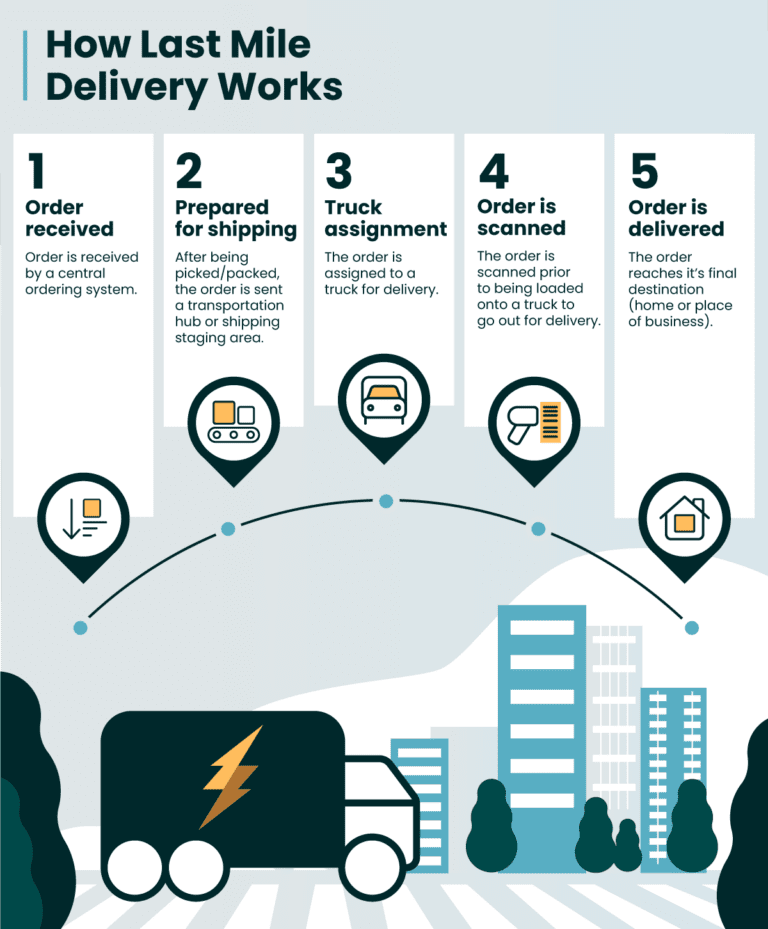
How much does last mile delivery cost?
The cost of last mile service can vary widely based on a few different factors. For example, it’s a lot cheaper to deliver a yoga mat than it is to deliver and install a piece of fitness equipment.
While the cost of last mile delivery can seem high, you cannot put a price tag on shopper satisfaction. Brands can be tempted to pass on shipping costs to their shoppers, but it tends to deter them from making purchases. Case in point: in this survey, 84% of shoppers made a purchase specifically because shipping was free.
What elements of last mile delivery impact the cost? Here are a few variables that will drive the cost of last mile service up or down.
1. Size of items
Unsurprisingly, heavy and large items cost more. Most conventional couriers like FedEx and UPS will only accept packages up to a certain weight limit. And with costs rising proportional to weight, costs can add up when using traditional carriers.
2. Delivery location
If you’re delivering within an urban city, you’ll likely get better rates. But if you need to deliver to remote locations where there are fewer service options, you may be charged a premium. At GoBolt, pricing is tiered based on delivery zones.
3. Speed
How quick is last mile delivery service? Speed definitely plays into the overall costs of final mile delivery. The cost and speed will also depend on your agreement with the carrier. If you want to give your shoppers the ability to book an appointment for a delivery window, or to get their order delivered next day, it will cost more than if you offer a longer, more flexible delivery timeframe.
4. Level of last mile service
The level of last mile service pertains to what’s expected of the delivery person, whether it’s sufficient to leave items at the door, or whether they’re expected to bring heavy appliances into your home. Each 3PL or last mile courier will offer different service level options.
There are four main levels of delivery service:
- Curbside Delivery: The order is dropped off at the shoppers doorstep, outside the home or place of business.
- Threshold Delivery: The order is delivered just inside the front door.
- Room of Choice Delivery: The last mile carrier driver will deliver the order inside the home or place of business to whichever room the shopper prefers.
- White Glove Delivery: The final mile carrier will send trained delivery professionals who will bring the item inside the home or business, to the exact spot where the shopper would like it set up. The trained delivery professionals will proceed with installation according to the product specifications and will take away any packing materials or garbage when they leave. This last mile delivery service is typically the most expensive, but done right, white glove delivery really benefits your brand.Many carriers add fuel surcharges to their delivery rates, which can fluctuate based on fuel prices. These charges can significantly impact the cost of last mile delivery, especially over long distances or in regions with higher fuel costs.
5. Fuel surcharges
Many carriers add fuel surcharges to their delivery rates, which can fluctuate based on fuel prices. These charges can significantly impact the cost of last mile delivery, especially over long distances or in regions with higher fuel costs.
Bonus: GoBolt Parcel deliveries come with no fuel surcharges. This means your shipping costs are more predictable and less impacted by external factors like fluctuating fuel prices.
How fast are last mile carriers?
The final mile is often the quickest leg of the logistics journey. The orders depart from the fulfillment center and head to the shopper’s address.
Of course there may always be delivery exceptions which may get in the way of how quickly an order arrives. A delivery exception is when the delivery is interrupted due to unexpected reasons. This can result in deliveries being delayed or even undeliverable.
Delivery exceptions can include:
-
- Inclement weather
-
- Lost or damaged orders
-
- Issues with the delivery address
-
- Major events or unplanned road closures
-
- Missed hand-offs with the shopper
Who are the top last mile logistics companies in the U.S.?
Some examples of top last mile logistics companies in the U.S. include:
-
- GoBolt
-
- FedEx
-
- USPS
-
- Purolator
-
- Postmates
-
- InstaCart
Who are the major last mile carriers in Canada?
The major last mile carriers in Canada include:
-
- GoBolt
-
- XPO
-
- Canpar
-
- FedEx
-
- UPS
-
- CDS Logistics
How do I pick the best final mile carrier for my business?
Here are the top features you’ll want to look for in your final mile carrier partner:
-
- What are their operational and delivery schedules? Do they deliver up to 7 days a week, including holidays?
-
- Have their operations been optimized to be quick and cost-effective? This may include route planning. At GoBolt, our machine learning can identify a route combination that will achieve the shortest travel time and improved on-time delivery (OTD).
-
- Does their technology allow you to integrate your ecommerce platform with their systems for seamless fulfillment and delivery?
-
- Do they offer last mile delivery tracking to both shoppers and brands? For example, GoBolt’s system leverages email, SMS and our tech to free shoppers from big delivery windows. Plus real-time tracking allows shoppers to see exactly when their order is arriving. And for brands, they can view delivery status, timing of executions, and proof of delivery, including photos and signatures, all through the GoBolt Merchant Portal.
-
- Do they encourage two-way feedback to help improve the experience for both the brand and your shoppers? At GoBolt, we encourage shoppers to review their delivery experience, and we track and follow-up with any low ratings to address concerns immediately.
-
- Does the carrier have experience shipping large items? This can include large, heavy, or hard to handle products like furniture, appliances, and fitness equipment.
-
- For markets the carrier may not serve, are they willing to negotiate the best shipping rates for you with external carrier partner? At GoBolt, brands have access to the best delivery rates and transit times with our preferred carriers
-
- Do they have a sustainability mandate and focus their efforts on minimizing their environmental impact? GoBolt provides electric last mile solutions. including prioritizing deliveries on electric vehicles (EV) and sequestering emissions when delivering on an EV is not possible
Last mile carrier FAQs
Confused by all the supply chain jargon? You’ve come to the right place. We’re demystifying some of the most common terms you’ll hear.
What is last mile delivery?
Last mile delivery is transporting packages from their fulfillment center to their final destination, typically a home or place of business.
What’s the difference between a last mile and final mile carrier?
The answer here is pretty simple. When it comes to the supply chain, final mile and last mile refer to the same thing and can be used interchangeably.
What is last mile delivery tracking?
As mentioned earlier, last mile delivery tracking is incredibly important to the overall shopper experience. And needless to say, it’s also crucial to brands, as it provides necessary delivery performance insights.
How does delivery tracking work and how is it different for shoppers and brands?
-
- Tracking for brands: Tracking gives brands a birds-eye view of their last mile logistics. The insights gained from delivery tracking gives brands and their carrier partner the opportunity to optimize the delivery process. These insights can help optimize vehicle space, delivery routes, and provide stats on the number of packages that are delivered on time.
-
- Tracking for shoppers: Tracking a delivery through real-time insights (whether via email, web page, or SMS) gives shoppers intel as to where their shipment is. Ideally, through last mile tracking, they can see the drivers ETA and leave a review of their experience after the delivery.
What is the “Last Mile Problem”?
The last mile problem refers to the gargantuan task of optimizing costs, speed, and efficiency on the final mile.
What does “Accepted by Last Mile Carrier” mean?
It means your shipment has been received by the carrier who is tasked with the final delivery.
What is first mile delivery?
First mile delivery refers to the first leg of the shipping journey, where the product is transported from its factory to a fulfillment center. Also commonly referred to as “freight delivery.”
How GoBolt differs from other last mile carriers
GoBolt is a technology company building the largest sustainable supply chain network. GoBolt partners with brands to deliver a complete end-to-end shopper experience, including last mile delivery logistics solutions.
From small parcels to big and bulky items, GoBolt enhances the last mile delivery experience.
Here’s how GoBolt differs from other last mile carriers:
| Big & Bulky Last Mile | Parcel Delivery |
| Flexible delivery options. Choose from threshold, room of choice, or white-glove service. | Same-day fulfillment and next-day shipping. Offer your shoppers convenience and speed in major urban and surrounding areas. |
| Appointment booking. Your shoppers can select a shortened delivery window that is convenient for them. | Optional contactless delivery. Confirmation of delivery can be captured via signature or a photo. |
| Track and notify Your shoppers will receive SMS notifications and access to our truck tracking app so they can see exactly when their delivery will arrive. |
| Customer-centric last mile solutions We treat your shoppers as if they are our own. Our customer support team works up to 7 days a week, including holidays. We cover live chat, social, and email support channels. |
| Efficient routing solutions Our delivery software is uniquely powered by route optimization software and the concept of dynamic clusters, enhancing the efficiency and sustainability of our delivery routes. |
| Sustainable logistics GoBolt has a deep commitment to sustainability, providing brands with electric last mile solutions and carbon-neutral first party deliveries. |
Final notes on last mile carriers
The last mile is the first thing shoppers are going to remember about their experience with your brand, so ensure it’s a positive one. By familiarizing yourself with the steps and working with a committed partner, you’re one step closer to a great customer experience in the last mile every time.


